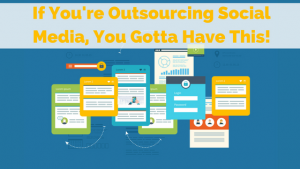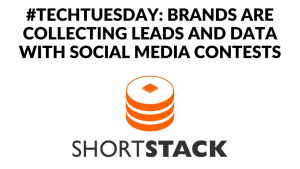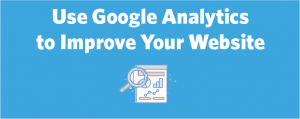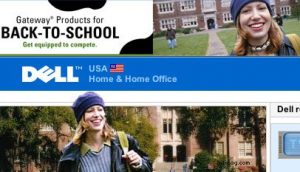LinkedIn has created more than their fair share of confusion lately. Between their updated and, at the moment, unstable, redesign of LinkedIn.com, changing Premium Membership features and Sales Navigator people are just confused and less sure than ever of what they should use, purchase or ditch.
LinkedIn doesn’t make it easy either. We deal with this every day; clients who say they want to call to get an issue fixed are often surprised by the fact there is no number to call. (For help with issues, see last week’s post on How to Submit a LinkedIn Help Ticket).
In addition to the recent confusion, lots of people don’t like the new design; some things have moved, and others are just gone. Well, that’s usually the point of a redesign, and most people don’t like change. Probably more than 90% of the people I hear this from are non-paying members. For those who are Basic Members (free), you receive a tremendous value for nothing. And, this platform belongs to LinkedIn. You borrow their network. More than an equal exchange of value, I think.
If you are a Premium Member, I get your frustration. Relearning and retooling your process is annoying. It’s also LinkedIn’s way of saying, “If you want to use our network for certain things (i.e. selling or recruiter), no problem; pay for the access and convenience of receiving information in one place, in multiple ways.”
It’s time to reconsider how you want to use LinkedIn, if at all. It’s a value-in value-out proposition. You might get lucky without adding much value, but that’s never a long-term strategy.
So, let’s take a look at what I would do if I were you.
For the CEO/C-Suite/President/Business Owner
LinkedIn.com:
- Build a client or talent-focused profile that highlights you, your company.
- Prune your network and then add people you know or want to know.
- Determine if you will use LinkedIn regularly. If so, upgrade to Premium.
- Make sure you know how your marketing and sales teams use LinkedIn to begin, nurture and engage with prospects and clients. Ask them to show you their LinkedIn strategy/plan and find out how they are doing. You can’t appreciate, measure or improve on what you don’t understand.
- Become knowledgeable on what is possible to do on LinkedIn.com:
Sales: researching people and companies, joining Groups where you might meet new prospects and see clients participating, finding alumni who might also be prospects, finding other influencers within your clients’ networks, etc.
Recruiting: Proactively searching and finding potential talent is far more effective than posting a job and waiting for people to apply. Yes, it’s more time-consuming, but it’s far more targeted and strategic.
- Determine if salespeople should move to Sales Navigator. Would it be helpful to save people as leads, connect beyond 2nd level connections and save companies as accounts so that you can follow their professional activity and know what’s important to them and their companies? Most likely. The only time too much information is not helpful is when you don’t know how to sort and make sense of it. Sales Navigator helps make sense of information.
Salespeople and Marketers: Finders and Minders (I’ve decided I prefer this to “Hunters & Farmers”)
LinkedIn.com:
- Build a client-focused profile that highlights you and your company. Show your value and how you are different quickly.
- Prune your network and then add people you know or want to know. Connect with your current clients and prospects.
- Determine if you will use LinkedIn regularly. If so, consider an upgrade to Sales Navigator, skip Premium.
- Work with your marketing and sales team come up with a LinkedIn strategy. Learn what others on your team are doing on LinkedIn and ask how they are doing.
Find salespeople who are increasing their funnel, nurturing client/customer relationships and are engaging through LinkedIn in a variety of meaningful ways.
Dismiss those that aren’t getting results, that’s too easy. Find others who are and learn from them.
Ask marketing to share their content plan with you.
If you are one salesperson trying to buck an old system (cold calling only) sit down and figure this out. If what you do and how you do it is good, and you bring value, you can make LinkedIn work for you. Your LinkedIn activity will make a difference in your sales activity.
Record where leads and conversations originate. Capture the lead source as LinkedIn, so you know it’s working. If LinkedIn’s network is not helping you, you need to examine why not. It’s a network of more than 500 million people who are there for pretty much the same reason you are.
If it’s not working, what can you do differently? Start with your approach and messaging. Are you adding value first or trying to sell something before anyone cares about you or how you can help them? Be honest.
LinkedIn Sales Navigator:
- Save all your clients/customers as Leads and their companies as Accounts. You can then follow them from your Sales Navigator Home Page. You will find this Home Page is far quieter than your LinkedIn.com Home Page.
- Review the lead recommendations that Sales Navigator offers. Add the appropriate lead recommendations as Leads to the saved Accounts, and now you are beginning to create a picture of influencers, champions, decision makers and new opportunities within a current client/customer or prospect.
- Follow your clients’/customers’/prospects’ activity and how you are connected to them. Reach out and connect with a personalized invitation request.
- Reach beyond your network to 3rd level connections. At some point, you may tap out of 2nd level connections and want to reach further out. Maybe you have a new territory or area of focus. Your network should constantly be expanding.
- You create sales preferences when you launch Sales Navigator, and once Sales Navigator knows your preferences and sees who you are saving as Leads and Accounts, they provide you with similar people and companies. Seriously? That’s pretty helpful.
- If you use Gmail, it now interfaces with Sales Navigator. Or, if you have the Professional or Enterprise level of Salesforce.com, you can connect Salesforce.com with Sales Navigator.
Before you give up on LinkedIn.com or Sales Navigator, work at it for three months, pay attention and add value consistently. And in doing so, you will increase your professional value.
Digital & Social Articles on Business 2 Community(61)
Report Post





